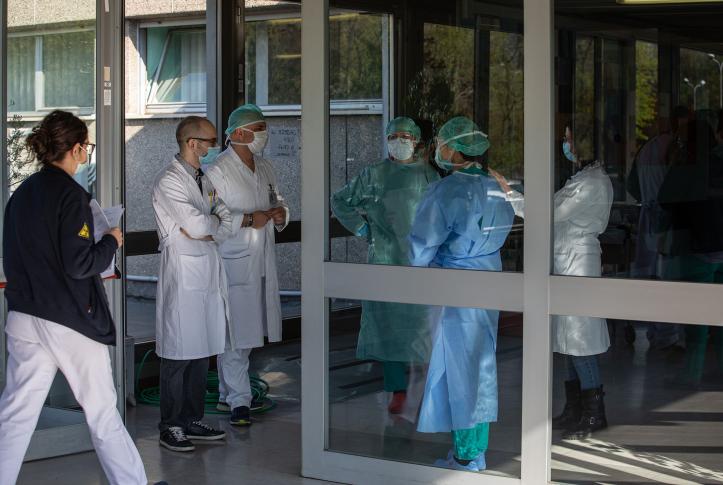COVID-19, the disease caused by the newly discovered severe acute respiratory syndrome SARS-CoV-2, is rapidly spreading across the globe. Country leaders and health systems around the world must act fast to respond to the increased need to care for those affected, including older adults and people with chronic conditions, who are the most at risk.
We assess the U.S. health system’s capacity to respond to COVID-19 compared to 16 countries — 10 that take part in the Commonwealth Fund’s annual international survey (Australia, Canada, France, Germany, the Netherlands, New Zealand, Norway, Sweden, Switzerland, and the United Kingdom) plus six others that have experienced large numbers of confirmed COVID-19 cases (China, Italy, Singapore, South Korea, Spain, and Taiwan). Specifically, we describe how the U.S. compares in terms of:
- populations at risk, including the elderly, as well as those with underlying chronic diseases
- select aspects of health system capacity to manage and diagnose patients in the acute setting, and
- affordability of care.
Populations at Risk
The populations at greatest risk of complications or mortality from COVID-19 are older adults, individuals with underlying chronic conditions, and immunocompromised people. While the United States has a relatively average share of older adults, it may be faced with a greater COVID-19 disease burden compared to other countries because of a higher rate among those adults of underlying chronic conditions such as diabetes, hypertension, respiratory conditions, and heart disease.
Health System Capacity
Health systems around the world are facing increased demand for health care personnel needed to test potential cases and care for those affected, as well as for hospital beds for the critically ill.
Data show that in the United States, workforce and acute hospital bed capacity is lower than in many of the countries examined here. This suggests that U.S. health care resources will be stretched to a greater extent than those of many other countries. In addition, a recent Commonwealth Fund analysis revealed considerable variation among states in terms of capacity to respond.
Despite a smaller supply of acute hospital beds, the U.S. has a lower occupancy rate of these beds, signaling greater capacity to deal with public health emergencies. In addition, the U.S. seems to have relatively greater ability to provide radiography (CT) scans of suspected COVID-19 patients, as well as a higher number of intensive care beds.
Affordability of Care
Responding effectively to COVID-19 requires that patients are able to access and afford health care services. About 30 million people are uninsured in the U.S., while another 44 million are underinsured because of high deductibles and out-of-pocket costs. A new poll by NBC News and the Commonwealth Fund found that more than two-thirds of U.S. adults say that their potential out-of-pocket costs would figure prominently in their decision to get care if they had coronavirus symptoms.
Based on data from previous international surveys conducted by the Commonwealth Fund, we know that U.S. adults, including older adults, are generally more likely to forgo needed medical care — including doctor visits, tests, treatments, and medicines —than those in other countries. Federal legislation passed on March 18 requires health insurers to cover COVID-19 testing services.
Learning from other countries is vital in responding to a global pandemic. The United States and many European countries are being faced with a pandemic of this scale for the first time in more than a century. European nations have developed a collective resource to monitor health system responses to COVID-19. Asian countries such as Taiwan and South Korea have been able to quickly implement lessons learned from the 2003 SARS outbreak to contain COVID-19. Health care leaders must look to the experience of other countries to improve current and future pandemic responses.



